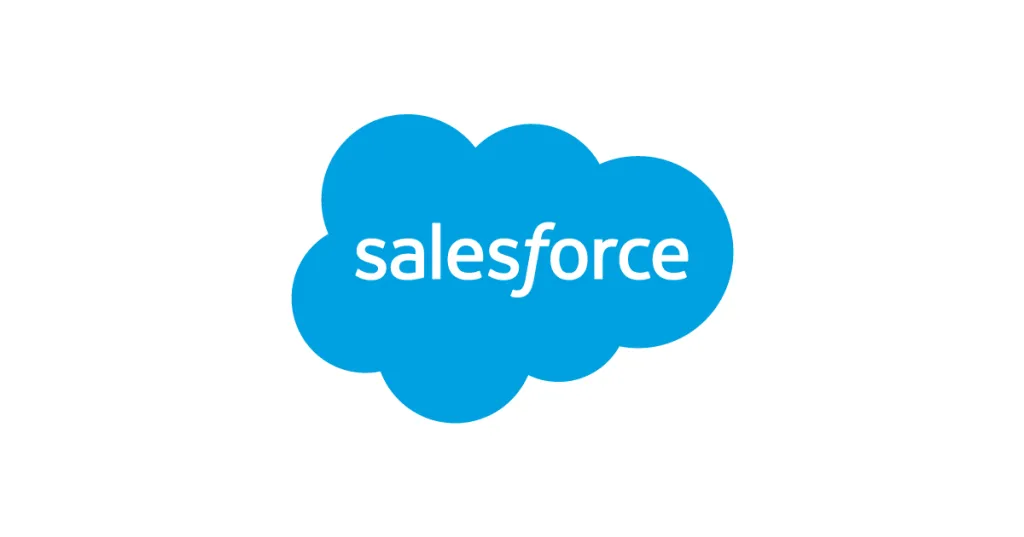Introduction
As the capabilities of content management systems continue to evolve, businesses and publishers have more options than ever when it comes to choosing a platform to power their online presence. Whether you need a full-featured CMS for a large enterprise website or a simple blogging tool, there are quality solutions available for every budget and technical proficiency level. In this article, we evaluate 15 popular CMS platforms based on their key features, functionality for content creators and marketers, and overall value proposition.
Methods of Evaluation
To evaluate and rank each CMS, we considered several important factors: features and functionality, ease of use, pricing and business models, community support and documentation, traffic statistics, and number of backlinks according to metrics from SEMrush. Additional criteria like integration capabilities, customization options, and mobile experience also factored into the analysis. While reviews and subjective assessments play a role, data-backed metrics like traffic, backlinks, and keyword trends help determine how established and competitive each platform is in today’s digital landscape.
1. WordPress
WordPress is one of the most popular content management systems powering over 40% of websites. Originally released in 2003, WordPress is open-source software written in PHP and paired with MySQL or MariaDB. It can be used to easily create blogs, websites, portfolios and more.
Pros: Some key advantages of WordPress include:
– Easy to use interface with thousands of plugins and themes available
– Open source and free to use
– Large community support with extensive documentation available
Cons: One potential disadvantage is that as an open source project, there may be some security vulnerabilities discovered from time to time. However, WordPress stays on top of security issues and prompts users to update regularly.
Pricing: WordPress itself is free and open source. There are also a variety of affordable hosting plans available to get WordPress installed and running on your own domain name. Popular managed WordPress hosting providers like Bluehost, SiteGround and HostGator start around $4-5/month.
Some key stats about WordPress include:
– Over 60 million websites use WordPress as their CMS
– Over 35% of all sites on the Internet use WordPress
– WordPress powers sites like CNN, MTV, Time, and more
2. Adobe Experience Manager
Adobe Experience Manager (AEM) is a commercial content management system and digital asset management software developed by Adobe Inc. AEM allows users to manage digital marketing campaigns, personalize experiences and publish content across multiple channels from a single interface.
Pros: Some key advantages of Adobe Experience Manager include:
– Powerful digital asset and content management
– Supports personalization at scale with robust targeting and profiling rules
– Wide range of templates and integrations with technologies like React and Angular
– Seamless integration with other Adobe solutions like Analytics, Target and Campaign
Cons: One potential disadvantage is the higher cost of ownership compared to open-source options. AEM has expensive licensing fees and typically requires specialized implementation partners to set up and customize.
Pricing: Adobe Experience Manager pricing is based on named user licences and starts at $150 per user per month for the standard edition. Enterprise editions with additional capabilities are also available and pricing depends on requirements and support plans selected.
Some key stats about Adobe Experience Manager include:
– Used by over 5,000 companies worldwide across many industries
– Supports over 30 built-in languages out of the box
– Over 12 million digital assets under management on the public cloud
– Integrates with Adobe Analytics, Target and Campaign for comprehensive solutions
3. WordPress.com
WordPress.com is a fully hosted WordPress platform provided by Automattic. It allows users to create blogs and websites without having to install or manage software on their own servers. Some key advantages include being free to use with additional paid upgrades, having an easy setup process and optimized interface.
Pros: Some key advantages of using WordPress.com include:
– Fully hosted WordPress platform from Automattic, so no server maintenance or software updates required.
– Free and paid plans available, allowing simple sites to be created for free while also scaling well with paid upgrades.
– Easy setup process without needing technical skills or website experience.
– Optimized user experience focused on blogging, content creation and management.
Cons: The main disadvantages of WordPress.com include:
– Limited customization options compared to self-hosted WordPress due to platform restrictions.
– Unable to install third-party plugins from external repositories.
– Paid plans may be required for advanced features or large site traffic volumes.
Pricing: WordPress.com offers three main plan options – Free, Personal and Premium. The Free plan allows basic site building and publishing for personal non-commercial use. Personal plans start at $4/month and remove WordPress.com advertising. Premium plans start at $8/month and provide additional features like unlimited premium themes and more customization options.
WordPress.com currently hosts over 58 million websites and sees over 900 million visitors per month. It is the largest hosted blogging platform and content management system (CMS) in the world.
WP.comBuild a site, sell online, earn with your content, and morewordpress.com
4. Shopify
Shopify is a leading commerce platform that allows merchants to create online stores across multiple channels. Founded in 2004 and based in Ottawa, Canada, Shopify powers over 1 million businesses in approximately 175 countries. With Shopify, merchants can sell products online via a website or mobile app, track inventory, process payments, fulfill orders, and generate reports.
Pros: Some key advantages of using Shopify include:
– Easy to setup online stores and blogs with drag-and-drop themes and templates
– Integrations with popular apps and payment gateways like Facebook, Amazon, PayPal for expanded functionality
– Strong focus on merchant and customer experience with tools for marketing, inventory, payments and more
– Mobile-optimized for selling on the go with iPad and smartphone apps
Cons: A potential disadvantage is the monthly subscription fee which can increase costs compared to free open-source platforms. However, Shopify’s all-in-one solution aims to offset this with powerful features and integrations out of the box.
Pricing: Shopify offers several monthly pricing plans starting from $29 per month for the basic Shopify plan, which supports a single store with two staff accounts. Higher tier plans like Shopify Plus provide additional features targeted at larger enterprises.
Some key stats about Shopify include:
– Over 1 million merchants globally use Shopify
– Shopify powers approximately 10% of all online retail in the US
– Shopify processed over $175 billion in gross merchandise volume (GMV) in 2021
– The Shopify app store has over 6,000 partner apps for additional features and integrations
5. Wix
Wix is a leading cloud-based web development platform that allows both technical and non-technical users to build and manage professional websites and online stores. Founded in 2006 and headquartered in Tel Aviv, Israel, Wix has over 200 million registered users worldwide.
Pros: Some key advantages of using Wix include:
– Intuitive drag-and-drop website builder for creating responsive sites quickly
– Large library of professionally designed templates to choose from
– Good option for non-technical users due to its simplicity
– Wide range of eCommerce features and tools available with premium plans
– Robust set of marketing, analytics and SEO tools
Cons: A potential disadvantage of Wix is that customization options may be somewhat limited compared to other platforms like WordPress. Creating more complex websites with unique designs or functionality may be challenging without coding knowledge.
Pricing: Wix offers both free and premium subscription-based plans starting at $13/month. The free Basic plan allows for creating one website along with 3GB of storage and basic features. For more advanced options, the Combo ($17/mo), Unlimited ($25/mo), or VIP ($49/mo) plans unlock more storage, additional editing and marketing tools.
Some key stats about Wix include:
– More than 200 million registered users worldwide
– Widely used for small business websites, portfolios, and online stores
– Over 500 free templates and 3,000+ apps and add-ons available
– Offers both free and premium subscription plans
6. Squarespace
Squarespace is a popular all-in-one website building platform that allows users to create professional and beautiful websites without any coding knowledge. With Squarespace, users have access to a wide range of professionally designed templates across various industries to choose from to create their online presence.
Pros: Some key advantages of using Squarespace include:
– Beautiful design templates for creating professional sites
– Mobile-optimized templates mean the site looks great on any device
– Commerce functionality and SEO tools are included so sellers can easily sell online
– Intuitive drag-and-drop interface makes site building easy with no coding required
Cons: One potential disadvantage is the pricing, which starts at $12 per month for the basic plan that may not include all the necessary features for some users’ needs. More advanced plans go up to $30 per month.
Pricing: Squarespace offers various pricing plans starting from $12 per month for the basic Access plan that provides sufficient features for basic personal websites. For more advanced eCommerce and portfolio sites, plans start at $18 per month. The most advanced Commerce plan is $30 per month and includes the most features for full-fledged online stores.
Some key stats about Squarespace include:
– Used by over 2 million sites worldwide
– Over 100 professionally designed templates to choose from
– Mobile optimized templates ensure sites work well on any device
– Integrated eCommerce functionality and SEO tools
7. Demandware
Demandware is a cloud-based e-commerce platform owned by Salesforce. It provides an API-first commerce platform that allows merchants to deliver personalized omnichannel experiences across all digital touchpoints including mobile apps, websites, call centers, stores and more. With Demandware, merchants can manage orders, inventory and fulfillment on a single platform to drive higher conversions and retention.
Pros: Key advantages of Demandware include:
– API-first commerce platform that is developer friendly
– Personalized experiences across all channels using AI/ML
– Single view of customer with integrated order management, analytics and returns
– Integrated loyalty and subscription management features
Cons: A potential disadvantage is that Demandware is only available as a paid subscription with no self-hosted option. However, the platform offers significant capabilities out of the box without additional development costs.
Pricing: Demandware pricing starts at $2,000/month for basic capabilities and scales based on transaction volume and custom requirements. Additional services such as implementation, migration, training and support are priced separately. Discounts are available for annual commitments and enterprise customers.
Some key stats about Demandware include:
– Used by over 2500 global brands such as Sony, Timberland, Coach and Keurig
– Processes over $50 billion in commerce transactions annually
– Integrated with all major e-commerce platforms including Magento, SAP and Oracle
– Available in over 30 languages for localization
8. Moodle
Moodle is an open-source learning platform designed to provide educators, administrators and learners with a single robust, secure and integrated system to create personalized learning environments. Initially released in 2002, Moodle has grown to be one of the most widely used learning management systems in the world with many organizations and educational institutions relying on it for their online course offerings and learning needs.
Pros: Some key advantages of Moodle include:
– Free and open source offering flexibility and cost savings
– Robust feature set for course creation, assessments, assignments and more
– Large active community for support, contributions and integration
– Very customizable and easy to manage for both administrators and instructors
– Seamless integration with third party LMS, libraries and products
Cons: A potential disadvantage is that the open source nature means there is no single company responsible for support. While the community is large, some institutions may prefer a proprietary LMS with commercial vendor support.
Pricing: Moodle is completely free and open source. There is no licensing or subscription fees. However, commercial support and hosting is available from a variety of Moodle partners and service providers for a fee if desired.
Some key stats about Moodle include:
– Over 250 million users worldwide
– Used by over 12,000 institutions globally
– Available in over 180 languages
– Highly customizable with over 9,000 additional plugins and themes available
– Fully responsive design that works on any device
9. Drupal
Drupal is an open source content management system (CMS) built on the PHP scripting language. It was started in 2001 and is used by over 1 million websites including the White House and NASA. Some key advantages of Drupal include its high level of customization, powerful development framework, and large library of add-on modules.
Pros: Some key advantages of Drupal include:
– Highly customizable and flexible – The theming system and various modules allow deep level of customization.
– Powerful development framework – Developers can build complex sites efficiently using the object-oriented MVC framework.
– Large library of modules for additional functionality – Over 50,000 add-on modules can extend the core functionality.
Cons: A potential disadvantage is the learning curve required to master Drupal’s advanced functionality and API. It may not be as intuitive for non-developers or beginners compared to simpler CMSs.
Pricing: Drupal is open source and completely free to download and use. However, for commercial websites and projects, support subscriptions and professional services are available for a fee from third party vendors and the Drupal association.
Some key stats about Drupal include:
– Used by over 1 million websites globally
– Powered by a community of over 1 million developers
– Over 50,000 add-on modules available to extend functionality
– Flexible theming system allows highly customizable designs
– Built on a powerful object-oriented framework
10. WooCommerce
WooCommerce is an open-source ecommerce platform built on WordPress. It allows merchants to build an online store for selling physical and digital goods through a WordPress site. WooCommerce is currently the most popular ecommerce platform on WordPress powering over 30% of online stores.
Pros: Some key advantages of using WooCommerce include:
– Most popular ecommerce plugin for WordPress leveraging an existing WordPress site
– Customizable themes & plugins marketplace to modify storefront design and functionality
– Mobile optimized storefront design for shopping on any device
– Open-source and free to use with optional paid plans for Support.
Cons: One potential disadvantage is that as an open-source platform, paid support options are required for technical assistance versus built-in support of some proprietary platforms.
Pricing: WooCommerce offers both free and paid plans. The free basic plan allows merchants to build an online store with core functionalities. Paid plans start at $89 per year and offer priority support and access to additional features.
Some key stats about WooCommerce include:
– Used by over 5 million active installations globally
– Processed over $250 billion in sales since its launch
– Has a large active developer community with over 300 extensions in the official plugin directory
11. Joomla
Joomla is an open-source content management system (CMS) that makes it easy to create interactive websites and applications. Originally released in 2005, Joomla has grown into one of the most popular choices for building websites.
Pros: ‘Simple to install and maintain’, ‘Strong community and documentation support’, ‘Customizable templates and extension library’
Cons: One potential disadvantage is that Joomla’s native functionality is more limited compared to paid CMS platforms. Regular maintenance and updates are required to keep the code secure.
Pricing: Joomla is free and open-source. Upgrades and security patches are also provided free of charge by the Joomla project and community. Premium extensions, themes and services may carry additional costs.
Some key stats about Joomla include:
– Used by over 1 million websites globally
– Available in over 50 different languages
– Has a community of over 1.5 million registered users
– Receives regular software updates and security patches
Joomla.orgThe Flexible Platform Empowering Website Creatorsjoomla.org
12. PrestaShop
PrestaShop is a free and open source ecommerce platform that allows merchants to build an online store and start selling online. Founded in 2005, PrestaShop has grown to power over 300,000 online stores in 150+ countries worldwide.
Pros: Some key advantages of PrestaShop include:
– It is free and open source so there are no licensing fees
– Large selection of over 50,000 free modules to customize and extend features
– Intuitive admin interface makes it easy to configure and manage the online store
– Flexible templates and design options allow merchants to customize the shop frontend
Cons: One potential disadvantage is that the free version may not have all the features and support of premium ecommerce platforms. Additional development may be required to customize or modify certain aspects of the platform.
Pricing: PrestaShop has both free and paid plans. The core software is free and open source. Additional services like hosting, support plans and professional services are available for purchase on the PrestaShop website.
Some key stats about PrestaShop include:
– Used by over 300,000 online stores globally
– Available in 60+ languages
– Over 50,000 free modules available to extend functionality
13. Ghost
Ghost is a powerful open source platform for building and running a modern online publication. Originally started in 2013 by Anthropic, it has grown to become one of the most popular content management systems (CMS) for blogs and publications online.
Pros: Some key advantages of Ghost include:
– Simple blogging platform that is easy to setup and use
– Highly customizable design themes that allow complete control over site appearance
– Mobile optimized publishing for seamlessly readable content on any device
– Powerful writing tools for formatting and publishing rich content
– Open source and self-hosted options provide flexibility and control over your site
Cons: One potential disadvantage is that as an open source project, it does not receive the same ongoing development resources as premium commercial CMS platforms. However, the community and ecosystem of plugins helps address this.
Pricing: Ghost offers a freemium pricing model. The hosted option on Ghost.com starts from $9/month for basic usage. For self-hosting, Ghost is free and open source to download and customize however you need.
Some key stats about Ghost include:
– Used by over 35,000 sites including Sky, TED, The Huffington Post, GitHub, Anthropic
– Features a simple yet powerful editing interface for writing and publishing content
– Available as a hosted service on Ghost.org or self-hosted on your own server
14. Webflow
Webflow is a visual website builder and content management system (CMS) that allows users to design and build custom responsive websites without writing any code. Founded in 2013 and based in San Francisco, Webflow has raised over $150 million in funding and powers websites for brands like Microsoft, Nestle, and BBC.
Pros: Some key advantages of Webflow include:
– Visual drag-and-drop interface for designing sites without coding
– Built-in CMS for managing content without technical expertise
– Fully customizable designs and functionality through code editing
– Integrations allow exporting sites to platforms like GitHub Pages, WordPress, and Shopify
Cons: One potential disadvantage of Webflow is that while code can be edited, the interface is not suited for complex custom programming. Developers who need full CSS/HTML/JS customization may find the constraints of the visual editor limiting.
Pricing: Webflow offers three pricing tiers:
– Personal: $12/month, single user access
– Business: $24/month, unlimited users and clients
– Enterprise: Custom plan, priority support and SAML authentication
Some key stats about Webflow include:
– Used by over 300,000 teams worldwide
– Powers over 1 million sites
– Supported on all devices with a responsive design approach
– Integrates with over 300 applications including Shopify, WordPress, and Adobe Creative Cloud
15. BigCommerce
BigCommerce is one of the leading ecommerce platforms for building online stores and websites. Founded in 2009 and headquartered in Austin, Texas, BigCommerce powers over 60,000 online B2C and B2B stores globally. The platform provides all the essential tools and features to build, manage, and grow an online store. These include tools for managing products, orders, inventory, marketing, and more. BigCommerce is entirely cloud-based, which makes it extremely flexible and easy to set up without any dedicated infrastructure.
Pros: Some key advantages of BigCommerce include:
– Robust e-commerce platform with all essential store building features
– Fine-grained user permissions and roles to manage store access
– Custom design and development capabilities via themes and apps
– Seamless integrations with popular platforms like Shopify, Magento, and WooCommerce
– Flexible hosting and pricing options for stores of all sizes
Cons: One potential disadvantage is that customizations may require hiring a developer since the platform is not as customizable as self-hosted alternatives like Magento.
Pricing: BigCommerce offers several paid pricing plans including Standard, Plus, and Enterprise starting at $29.95/month with transaction fees. All plans include core ecommerce features while higher tiers provide additional functionality like discounts, gift cards, and fields customization.
Some key stats about BigCommerce include:
– Powers over 60,000 online stores globally
– Supports integrations with over 450+ apps and services
– Average order value is 30% higher than other ecommerce platforms
– $2B+ in processed annual sales
– 16+ years in the ecommerce industry
Conclusion
Whether you need an all-in-one solution, headless CMS, or specialized platform, there are many excellent open source and commercial options available. Consider priorities like your technical abilities, budget, and organization’s specific needs before choosing a CMS. Also evaluate criteria like user experience, integrations, and community longevity to find the right long-term partner. With so many quality tools to choose from, business owners have never had more power to effectively communicate their brand message through engaging digital experiences.
















